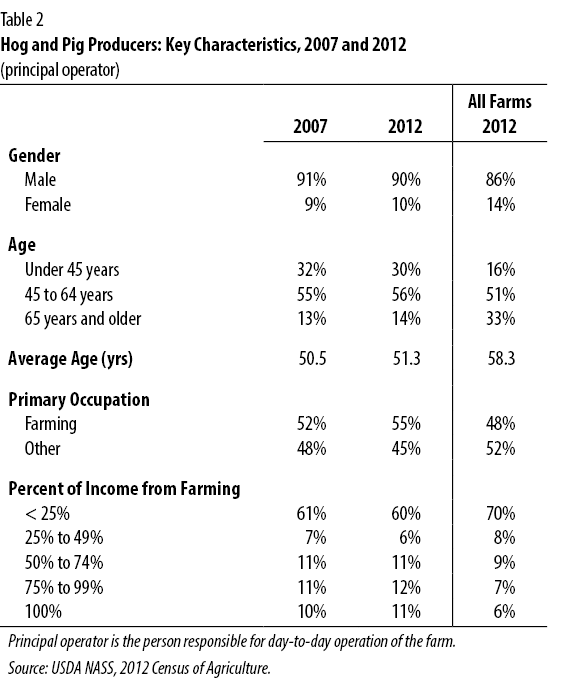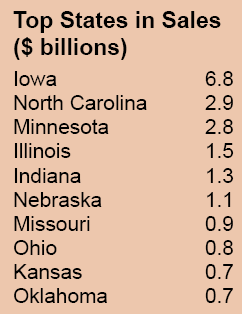- Data & Statistics
Access Quick Stats (searchable database)
The Quick Stats Database is the most comprehensive tool for accessing agricultural data published by NASS. It allows you to customize your query by commodity, location, or time period.
Access Quick Stats Lite
Quick Stats Lite provides a more structured approach to get commonly requested statistics from our online database.
Explore Statistics
County Level Information
Geospatial Data & Interactive Maps
- Publications
Browse NASS Reports
- by Subject
- by Date (Reports Calendar)
- by Title/Release Day
- by Keyword
- Guide to Products and Services
Additional Reports
Historical Publications
- Archived Ag Census Reports (2002 and prior - published every 5 years)
- Annual Agricultural Statistics
- Statistical Bulletins (final estimates, 1987 to 2012
- Track Records: (crops, livestock, grain stocks)
- Trends 20th century
- Price Reactions (after crop or livestock reports)
Receive Reports by Email:
- Newsroom
News Releases
04/08/25 USDA to Host Data Users’ Meeting on Statistical Programs
03/31/25 US farmers expect to plant more corn and less soybean acres
03/27/25 United States hog inventory down slightly
03/27/25 USDA releases Census of Agriculture data for the U.S. Virgin Islands
02/27/25 USDA releases Census of Agriculture data for the Commonwealth of Northern Mariana Islands
Read More News
ASB Notices
03/19/25 NASS reinstates select data collection programs and reports
02/26/25 NASS Delays Trout Production Data Release
01/02/25 NASS Delays Weekly Slaughter Release
09/25/24 NASS to publish 2023 Irrigation and Water Management report earlier
07/31/24 NASS to Review Acreage Data
Read More Notices
Videos
02/13/24 2022 Census of Agriculture Data Highlights
02/13/24 How to Find 2022 Census of Agriculture Data
02/13/24 2022 Census of Agriculture Data Release Event
07/16/21 What is a Farm?
08/05/20 The NASS Mission: We do it for you
View More Videos
ASB Briefings
04/17/25 National Hemp (April 2025)
04/10/25 Crop Production (April 2025)
03/31/25 Grain Stocks, Prospective Plantings, Rice Stocks (March 2025)
03/27/25 Quarterly Hogs and Pigs (March 2025)
03/11/25 Crop Production (March 2025)
View More Briefings
- Surveys
- Census
- About NASS
Structure and Organization
- Agency Overview
- NASS Biographies
- Organizational Chart
- Assistance to Other Organizations
- International Programs
- Talking About NASS - A guide for partners and stakeholders
- NASS Strategic Plan for FY 2022-2026
- USDA Strategic Goals
Guiding Principles
- Mission and Core Values
- Keeping Data Safe
- Confidentiality Pledge
- Security Pledge
- Security Statement
- Statement of Commitment to Scientific Integrity
- Regulations Guiding NASS
- Information Quality
- Learning Agenda, Fiscal Year 2024 -2026
Civil Rights
Work at NASS
Education and Outreach
- Understanding Ag Statistics
- Data Users' Meetings
- Morris Hansen Lecture
- International Conference on Agricultural Statistics
History and Procedures
- Agricultural Statistics Board and Lockup
- Agricultural Statistics: A Historical Timeline
- The Story of U.S. Agricultural Estimates
- As We Recall: The Growth of Agricultural Estimates, 1933-1961
-
Safeguarding America's Agricultural Statistics Report and Video
- History of Ag Statistics
- Report Procedures
- An Evolving Statistical Service
- Fact Finders for Agriculture
- Hall of Fame
- Contact Us
Mailing Address:
USDA-NASS
1400 Independence Ave., SW
Washington, DC 20250Survey FAQs and Contact Us:
Access FAQs or submit a question.
Data Inquiries:
Hours: 8:00 a.m. - 5:00 p.m. Central Standard Time
Monday - Friday, except federal holidays
Toll-Free: (800) 727-9540Media Inquiries:
Other USDA Inquiries:
Hours: Monday to Friday 8 a.m. - 5 p.m. EST
Toll-Free: (833) One-USDA
Email: askusda@usda.gov
Website: https://ask.usda.gov/s/Translation Services:
Regional and State Field Offices:
Find contact information for Regional and State Field Offices
Ask a Specialist:
Have a specific question for one of our subject experts? Contact a specialist.
Web Content Publishing Schedule:
Section 207(f)(2) of the E-Government Act of 2002 requires federal agencies to develop an inventory of information to be published on their Web sites, establish a schedule for publishing information, make those schedules available for public comment, and post the schedules and priorities on the Web site.
- Help
Technical Issues
Highlights
Hog and Pig Farming - A $22.5 billion industry, up 25 percent since 2007.
June 2014 | ACH12-4 | Download pdf Version
In 2012, the U.S. hog and pig industry had sales of $22.5 billion, accounting for 6 percent of total U.S. agriculture sales. Although some hog production takes place in all states across the country, it is heavily concentrated in a few states and counties. The 2012 Census of Agriculture provides a comprehensive picture of the industry, including overall size, value, and location; production costs; and farm and producer characteristics.
- Industry Size, Value, and Location
- Production Costs
- Farm Characteristics
- Producer Characteristics
- Box: Top States
- Box: Top Counties

Industry Size, Value, and Location
Hog and pig sales were $4.4 billion, or 24.6 percent, higher in 2012 than 2007, when the agriculture census was last conducted. Iowa had the largest increase in sales (up $1.9 billion), followed by Minnesota (up $0.6 billion) and Illinois (up $0.4 billion). North Carolina experienced a decline of $231 million in sales, but remained the second largest producer.
The top three producers – Iowa, North Carolina, and Minnesota – together accounted for 55 percent of the value of U.S. hog and pig sales and 56 percent of the 66 million hog and pig end-of-year inventory in 2012.
Even as the value of sales went up, the number of farms with hog and pig sales declined by 25 percent from 74,789 in 2007 to 55,882 in 2012. Farms specializing in hog production (that is, farms with more than 50 percent of their income coming from hog and pig farming) declined even more, going from 30,546 farms in 2007 to 21,687 farms in 2012 (a 29 percent decline).
At the county level, nine of the top ten hog and pig producing counties were in the top three states. Duplin County, North Carolina, ranked first in the nation in 2012 hog and pig sales, with $614 million or 3 percent of the U.S. total.
Production Costs
The 21,687 farms that are primarily hog and pig operations accounted for 89 percent of all hog and pig sales ($19.9 billion). Their production costs were $18.4 billion (19 percent higher than in 2007). Per farm average costs were $850,146, which is more than five times as much as the average for all farms. It is also a 68 percent increase over 2007 hog and pig farm average costs.
Farm Characteristics
Family and individually owned farms were 83 percent of hog and pig operations and accounted for 41 percent of sales. In contrast, corporations were 8 percent of hog and pig farms and accounted for 34 percent of sales. (Table 1)

Three types of producers operate hog and pig farms: independent growers raising hogs and pigs for themselves, contract growers raising hogs and pigs for someone else, and contractors using contract growers to raise some or all of their hogs and pigs. In 2012, independent growers operated 85 percent of hog and pig farms, accounting for 46 percent (91.4 million) of the 199.1 million hogs and pigs sold. Contract growers accounted for 44 percent (88.1 million), and contractors for 10 percent (19.6 million).
Producer Characteristics
The 2012 Census of Agriculture identified characteristics of those responsible for the day-to-day operation of farms specializing in hog and pig sales. These farmers on average were younger (51 years old) than principal operators overall (58 years old). Ten percent were women; this is an increase over 2007, but hog and pig farming had a smaller proportion of female principal operators than farms did overall in 2012.
Hog and pig producers were more likely to consider farming their primary occupation in 2012 than 2007, as well as more likely to do so than farmers overall. At the same time, 60 percent of hog and pig producers earned less than 25 percent of their income from farming. Eleven percent derived all of their income from the farm. (Table 2)

About the Census of Agriculture
The Census of Agriculture is the leading source of facts and figures about American agriculture. The 2012 Census results provide information at national, state, and county levels about what agricultural products were raised in the United States in 2012, as well as where, how, and by whom.
For easy-to-use tools that help both professional and casual users find and use the data, go to www.nass.usda.gov/AgCensus .
Last Modified: 10/12/2018



